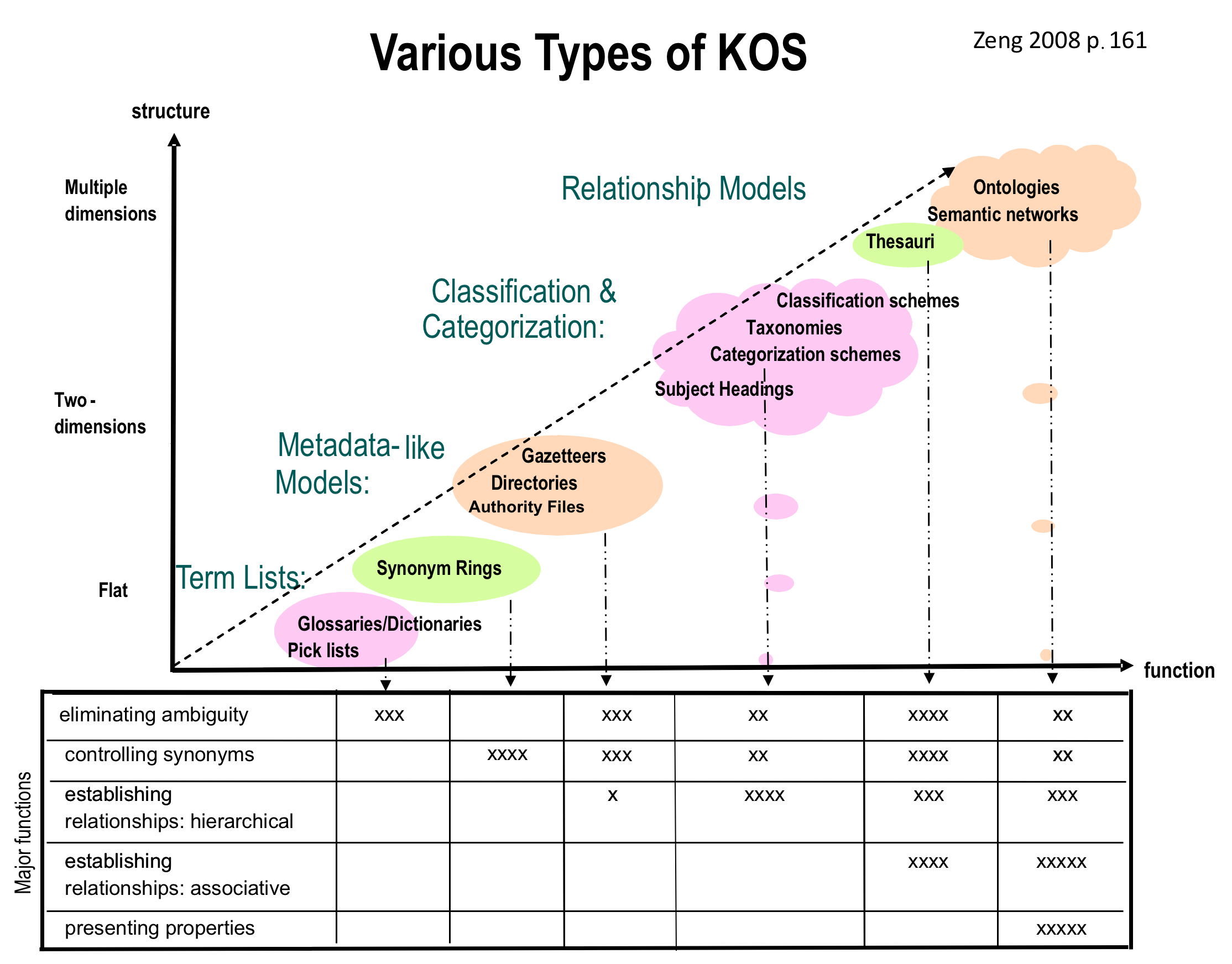
Image source: Zeng, Marcia Lei. 2008. Knowledge organization systems. Knowledge Organization, 35(2-3):160-182
[Taxonomy, Thesaurus, Ontology, and other Semantic tools ]
Instructor: Marcia Lei Zeng, Ph.D., Professor
School of Information, Kent State University
Introduction to various types of knowledge organization structures/systems /services (KOS) used in the networked environment. Understanding of functions and data models for enabling KOS, as well as the philosophical, logical, and linguistic fundamentals of KOS. Explanation of design options, features of KOS, and procedures to be used in the construction of taxonomies, thesauri, and ontologies. Application of these methods in a set of projects in which students construct components and small-scale taxonomies, thesauri, and ontologies with or without software. Analysis and evaluation of existing KOS. Issues related to online display, visualization, interoperability, and internationalization.
Knowledge organization structures/systems/services (KOS) contribute to the foundation of Websites, intranets, portals, management systems of assets, documents, and knowledge, as well as other web-based services. As these services have become increasingly large, complex, and database-driven, the information architecture that underlies them has become more sophisticated. It is important that information and knowledge professionals understand how to align KOS with the academic, research, service, and business goals of an institution and how to leverage navigation, searching, collaborative filtering, and automated indexing approaches and technologies by implementing effective KOS to achieve cost-effective, scalable solutions.
After completing the course, the students will be able to:
1. Demonstrate a higher level of understanding of the principles of taxonomies, thesauri, ontologies and other types of KOS through reading reports, product analyses, discussions, and independent projects.
2. Apply various methods of knowledge organization and representation in a set of projects that lead to the deliverables.
3. Construct lists, taxonomies, thesauri, and basic ontologies to be used for a networked environment.
4. Produce faceted, flat, hierarchical, and networked structures and understand their representational diagrams; create concept maps, semantic networks, knowledge graphs, etc.
5. Design and evaluate KOS and applications.
6. Describe and comment on the issues related to KOS in the networked environment.
7. Explain the impact of KOS on searching, browsing, and discovery.

Image source: Zeng, Marcia Lei. 2008. Knowledge organization systems. Knowledge Organization, 35(2-3):160-182